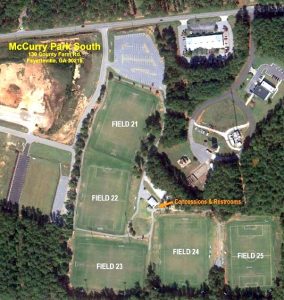Questions from The Citizen, answers from the tax assessor
Last week, The Citizen printed responses from Chief Assessor Joel Benton to questions raised after the newspaper printed two dozen letters complaining about property evaluations received recently.
The Citizen asked Benton to more completely answer some questions that seemed incomplete. Below are Benton’s responses to the second set of queries.
QUESTION: You seem NOT to have answered my first two questions: How many residential properties were physically and visually assessed (i.e., a trained, licensed assessor visited the property in question and performed an on-site inspection/assessment) from Jan. 1, 2015 through May 15, 2016? Is this number in line with previous periods, or high, or low? May I get specific answers to those two questions?
ANSWER from Joel Benton: Based on the premise of your question, please understand that all property in the county is physically and visually assessed when it is originally constructed in order to record the physical characteristics of the property. Properties are then revisited for various reasons such as: permitted additions and renovations, demolitions, appeals, severe weather (damage assessment), property exemption applications, taxpayer notification, field reviews, etc.
Outside of these types of follow-up visits, the information on record is regarded as accurate and correct as the property has been physically inspected to gather and document its actual and existing characteristics. There are standard tables in place within our system to account for physical depreciation over time. Once the physical data has been entered into our system, the statistical analysis of sales data becomes the main factor for revaluation.
The internal cutoff date for 2016 Assessment Notices was April 20, 2016, so anything visited after that date should be considered toward the 2017 digest.
There is no business process in place where every single visit to a property in the county is tracked within our computer system. If there is no change made to the data of a property record, then there is no way to pull an accurate count of field visits via any existing report.
That said, I can definitively state that there were 733 permits and 1,262 appeals worked within that time-frame which represents a physical and visual inspection. There is no need to revisit, re-measure, and recheck every property within the county every year.
Now that the economy and the housing market (as well as restraints to our department’s budget) is rapidly recovering, we are working toward re-implementing a 3- to 4-year rotating cycle where we recurrently examine the physical characteristics of each property within the county to verify that no unpermitted changes, improvements or demolitions have taken place.
Finally, I do not consider the amount of physical and visual property visits (assessments) to be out of line with previous periods.
QUESTION: In Question #2, you did NOT answer the second part of the question: “What percentage of residential properties within Fayette County were assessed via an examination of property transaction records?” May I get an answer to that specific question?
ANSWER: I may not fully understand your question here, because all properties in the county (100 percent) are assessed via the same mass appraisal method, which relies weightily on sales transfers (property transactions) between January 1 and December 31 of the prior year.
QUESTION: In Question 5, am I to infer from your answer that if my house experienced a computer-generated 3,000 percent increase in assessed value in one year, that neither you nor anyone on your staff would even notice? That my hyper-inflated assessment would just get stuffed in an envelope and mailed to me without any human intervening to say, “Wait a minute!”? Put another way, are you saying that your staff has no way to flag statistical “outliers” among the mass of computer-generated assessments?
ANSWER: The statistical “outliers” we mainly focus on are those that come to our attention during the validation process of sales transactions via sales ratio studies. The level of assessment in Georgia for tax purposes is 40 percent of its fair market value. Georgia mandates the standard range of assessment ratios to be between 36 percent to 44 percent — 40 percent being perfect (i.e., county value matches sales price).
When individual ratios fall well outside of the standard range, we do look at them more closely to determine if any errors on the property record and/or assessment have been made; this is the same type of flag of which you are referring.
Given your example of a 3,000 percent increase – this could certainly happen should a property be improved from one year to the next by adding a high end residence. Other large increases from one year to the next could be due to one’s benefit of a “frozen” appeal decision from 3 years prior coming to an end and the property being valued, once again, at the current year’s fair market value.
Also, when someone purchases a property (via a bona fide arm’s length transaction) for less than the county’s current fair market value, that value is adjusted (or “frozen”) for the year following the sale. Depending on the type of sale, this could be a larger percentage increase when placed back on at its current fair market value. The recent inclusion of additional sale types that, historically, were not considered to be bona fide arm’s length transactions (i.e. bank sales, distressed sales, short sales, sales at public auction, etc.) typically see a higher percentage increase from the year of the sale “freeze” to the following year when the “freeze” is removed.
QUESTION: Has there arisen in the past 16 months ANY occasion that you or any of your staff saw an assessment that made you say, “Let’s send an assessor out there to see if that figure holds up”? Has an assessor in the past 16 months personally assessed any property that seemed mis-assessed by your computer-process? How many times, if any?
ANSWER: Absolutely – this is a standard practice when we feel there might be an issue or cause of concern. As I mentioned earlier, researching “outliers” may be reason enough to physically revisit certain properties. Questions and concerns from taxpayers come up from time to time that will trigger a field visit to check for accuracy as well.
We will make field visits based on concerns about a property value for various reasons. Not all field visits result in a change or correction, but some do. Nonetheless, this is not a process that is “flagged” in any way that would make it possible to generate a number of times that it has happened within a certain date range.
Also, the appeal process is in place to assist with identifying and correcting any such “mis-assessments”. It’s a great checks-and-balance for the taxpayer (as well as the Board of Tax Assessors). Legislation has changed in the past few years that now require an assessment notice be sent to every property owner and to include an estimate of taxes. Assessment notices used to only be sent to property owners whose value increased from one year to the next and no estimate of taxes were included.
If a property value stayed the same or was lowered, no appeal rights were given. Now, all property owners have the right to appeal, regardless as to whether their value increased, decreased or stayed the same, because assessment notices are now generated for all property owners.
This assessment notice puts the taxpayer on notice of any changes in value that might have taken place. If the taxpayer feels this value change is not in line with the property’s true fair market value (what it would sell for on the open market), then they have the right to file an appeal on that value.
We always revisit the appealed property and double-check the physical characteristics for accuracy. Do we ever find mistakes? Of course we do. Sometimes mistakes happen … and when we find them, we readily fix them. We want to make sure all records are as accurate as possible for fairness and uniformity.
Please note, at any time during the year taxpayers are welcome (even encouraged) to come into our office to verify that the information we have on their property record is correct. Treating and valuing all property within the county as fairly and uniformly as possible is at the top of our priorities.













Leave a Comment
You must be logged in to post a comment.